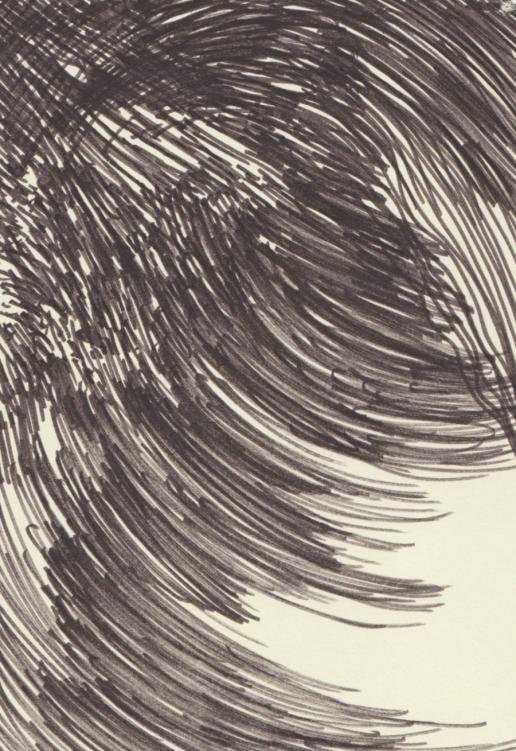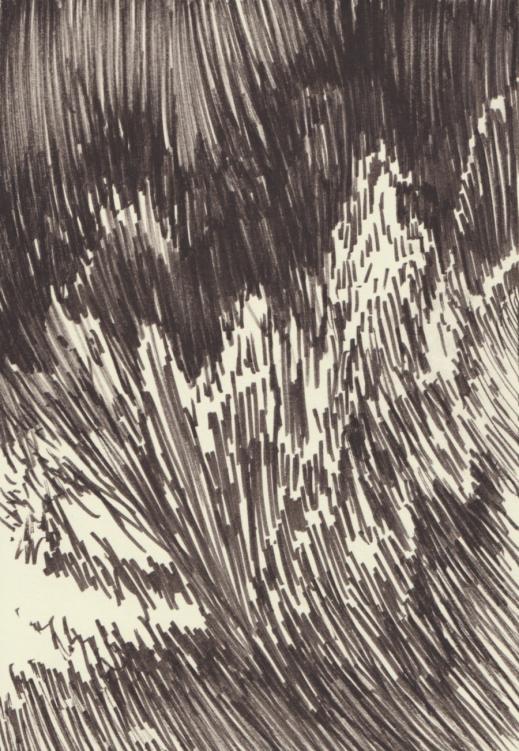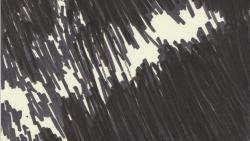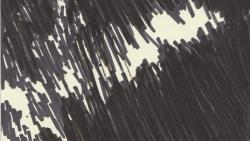Written on Water
Èlia Llach
28.06.2022 – 02.10.2022
Curator: Frederic Montornés
Opening: Tuesday 28 June, 7 pm
Conceived as an open book recounting a journey without leaving a room, Elia Llach’s Writing on the Water is an exhibition of more than 700 drawings distributed in two different rooms. It is a kind of stage of life designed to be entered but also to accommodate the strength of a thought behind the form of a gesture.
In literature, an inciting incident is an event that starts the plot. The author later explains what happened, describes how it happened and who was affected and reports on whether the characters can recover from it. Although they are not exclusive to a single literary genre, inciting incidents are more clearly evident in novels. There are several reasons for this: the incident acts as a dramatic premise, because without it nothing happens, because it affects the protagonist of the book and because the change it produces in them defines and resolves the conflict that is presented in the story.
Inciting incidents are also found in art. They are the impulses that stimulate the artist to create a work out of sheer necessity, though everything has already been said, the market is saturated with works, it is difficult to get them exhibited, and the work’s reception by the public is unknown… and indeed the artist may decide to destroy the work five minutes after creating it.
In a novel, the protagonist is the first person affected by the incident, but in art the artist is the first victim. Artists are the protagonist of everything: the incident takes place in their head and they determine that what we see, what we hear and what affects us must be understood as the remains of a shipwreck—of the artist and of ourselves—under the guise of a more or less orderly chaos. An example of this chaos is that of The Raft of the Medusa by Théodore Géricault (Rouen, 1791 – Paris, 1824), which manages to keep a fragile balance on an unstable sea.
Written on Water is based on three quotes related to water and words and the impact on Èlia Llach’s memory of Kasper, a play written by Peter Handke in 1967. Like an open book, this exhibition has been designed and crafted for the space that hosts it: a room.
The 36-square-metre space created by Llach is divided into two areas of different dimensions that are entirely covered by more than 700 drawings. It is a kind of stage of life built to accommodate both the viewer and the states of a thought that—like that of Kaspar Hauser or the artist herself—is capable of moving from the awakening of a gesture or language to incomprehension, obfuscation and the reflection of the purest silence.
Written on Water by Èlia Llach is the inner journey of an artist who, without leaving a room, strips the gesture and the word of any type of affectation to show herself from her entrails, through her hidden face, through silence.









